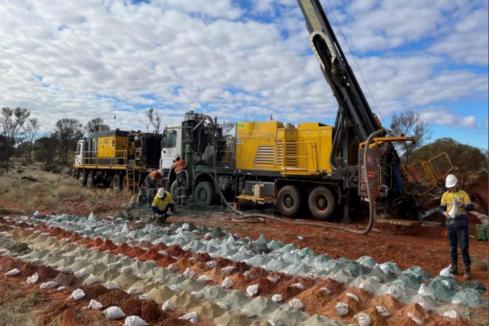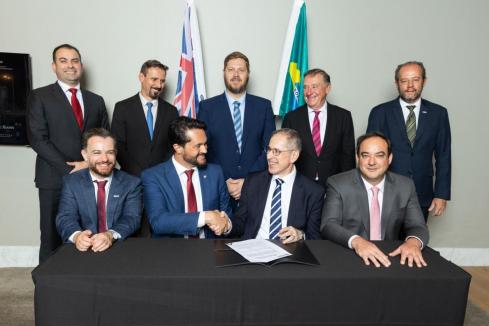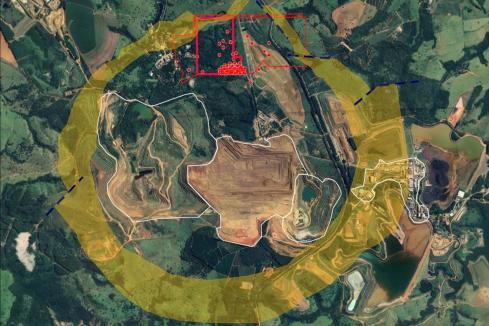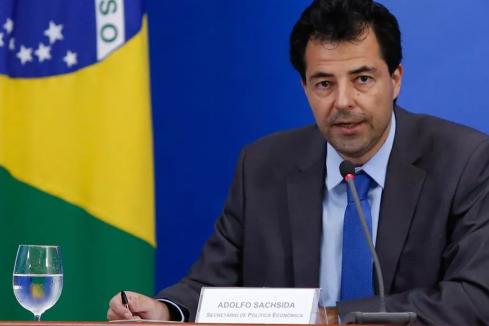West Australian nickel explorer, St George Mining has unveiled a large, compelling nickel-copper sulphide target beneath its Investigators prospect located at its Mt Alexander project in the north-eastern Goldfields. Previous drilling at the prospect delivered multiple shallower intercepts including a cracking 8.49 metres going 5.8 per cent nickel and 2.6 per cent copper from 183.9m. The company now plans to drill-test the deeper priority target early next year.
St George has already returned numerous high-grade nickel-copper hits at several prospects along some 5.5 kilometres of the mineralised Cathedrals Belt at its tenure, including at Investigators.
Other previous drill results from Investigators include 7.86m at 5.7 per cent nickel and 2.1 per cent copper from 184m and 8.40m grading 2.0 per cent nickel and 1.0 per cent copper from 199m.
The company is on the hunt for more mineralised goodies below high-grade mineralisation already confirmed by its drilling along the Cathedrals Belt. Early signs appear encouraging with a large priority target uncovered at depth.
A recent seismic survey - the first ever conducted at the Cathedrals Belt - has lit up the new geophysical target beneath Investigators that stretches for 450m.
Intriguingly, the target is interpreted by St George to contain the same geophysical signature as previous seismic works conducted in shallower areas where subsequent drilling hit high-grade nickel and copper.
According to St George, there are no other known rocks besides massive sulphides that could have returned a similar seismic reading in the Cathedrals Belt.
The company believes the location of the new seismic target is consistent with its geological interpretation of the Cathedrals Belt to potentially host massive sulphides down-dip from already intercepted nickel-copper mineralisation closer to surface.
The new target sits at about 800m depth.
St George Mining Executive Chairman, John Prineas said: “We are delighted with the results of the first-ever seismic survey at Mt Alexander which has delivered not only a breakthrough in our understanding of the complex intrusive system at Mt Alexander but also an outstanding new target for a potential massive sulphide deposit.
Our systematic exploration over the past year has been primarily focused on testing the deeper areas at Mt Alexander to build on the four shallow high-grade nickel-copper sulphide discoveries already made across more than a 5.5km east-west strike length of the Cathedrals Belt. The geological thinking is that if the system is that long, it must also be deeper than the shallow mineralisation identified.”
St George now plans to unleash the rig early in the new year to pierce the exciting target lurking beneath Investigators.
Curiously, the seismic survey has also detected other interesting structures lying parallel to the Cathedrals Belt, according to the company.
A total of seven structures warranting further investigation have now been mapped by St George. It believes the intersection of newly identified south dipping structures and north dipping structures could represent a trap site for sulphide mineralisation to drill-test in the future.
With the price of nickel trading at about US$20,000 per tonne - levels not seen since 2012 - and copper flirting with historical highs at more than US$9,000 per tonne, St George could get a few pulses racing if it gets onto anything decent beneath the significant mineralised horizon already identified along the Cathedrals Belt.
Is your ASX-listed company doing something interesting? Contact: matt.birney@businessnews.com.au















